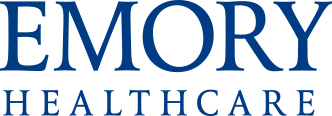Prevention-Focused
When you schedule your appointment, make sure to request an “annual wellness visit” instead of a physical – sometimes, your provider might also recommend a physical depending on your pre-existing conditions.
An Annual Wellness Visit is a “hands-off” visit rather than a full head-to-toe physical exam. You’ll focus on risks and a plan for staying well. Your health care provider won’t listen to your heart and lungs or check other parts of your body, and you probably won’t get screenings or blood tests during this visit, so you may still want to see your doctor for a yearly physical.
Also, you’ll want to schedule a different kind of appointment if you’re not feeling well or have a concern about a medical problem.
No Out-of-Pocket Cost
Your Annual Wellness Visit is a free Medicare benefit, so there’s no out-of-pocket cost for you. However, you might have a co-pay for some follow-up screening services and visits. Or, if you receive additional tests or services during the same visit that aren’t covered under these preventive care benefits, you may have a co-pay and the Part B deductible may apply. If you have questions about your benefits, talk with your insurance provider.
How to Prepare
There are a few ways you can prepare, once you’ve scheduled your AWV:
- Your doctor might have you complete a Health Risk Assessment in advance, which is a questionnaire that asks about your health, risks, and urgent needs.
- You also should prepare a few lists, including:
- The names of your health care team members, including any specialists
- The names of your home health agency and medical equipment supply companies (like an oxygen supplier), if applicable
- The names and locations of the pharmacies you use
- A copy of your Advance Directive, if you have one, and your insurance card
Also, bring a bag with all the medicines you take – this includes over-the-counter drugs, vitamins, and herbal supplements.
Additional Health Screenings
Depending on your family history and other factors, your doctor might refer you for other screenings that can help diagnose any issues and provide care at the earliest possible stage. Some of the screenings you might expect include:
- Mammogram: Sometimes, breast cancer is found after symptoms appear, but many women with breast cancer have no symptoms. That’s why regular mammograms are so important – recommended for women beginning at age 40, or earlier if you have a family history.
- Colonoscopy: Colon cancer is preventable or curable if it’s caught early, but it’s becoming more frequent for younger people. Recently, the recommended age for screening was lowered to starting at age 45 – or earlier if you have a family history.
- Prostate Cancer Screening: About 1 in 8 men will be diagnosed with prostate cancer in the U.S., and the signs and symptoms can be minor and are often similar to symptoms of normal aging. But if it’s caught early, it’s curable – and survival rates approach 99%. Your doctor can discuss when it’s right for you to have a prostate cancer screening.
- Well-Woman Visit: At a well-woman visit, you could have a few different kinds of screenings, including a pelvic exam, pap smear, or an HPV test. There are also screenings for cervical cancer and bone density, and important discussions to have as you approach and go through menopause.
Take the Next Step
You can schedule your annual wellness visit by calling Emory HealthConnection at 404-778-7777.




